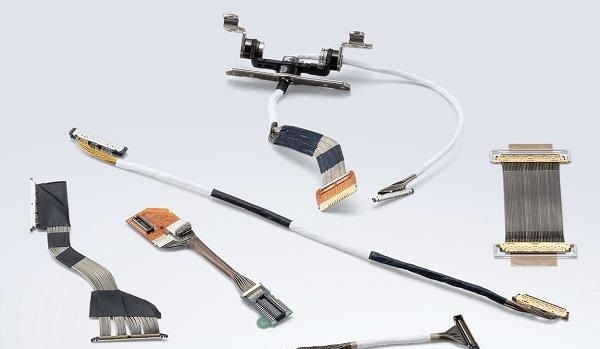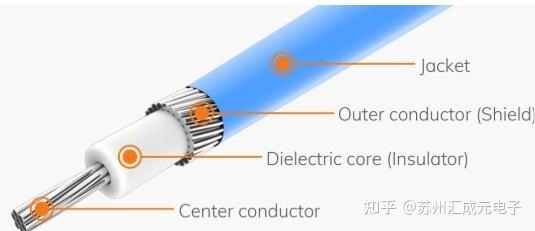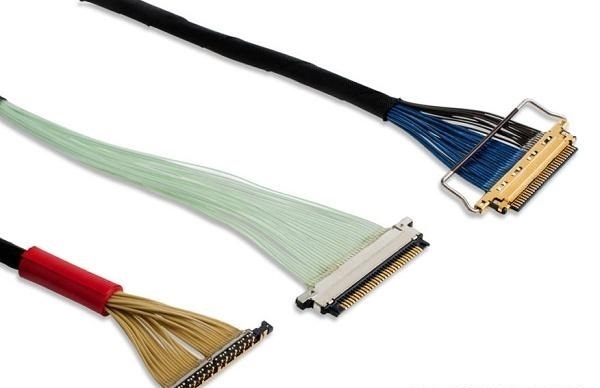Categorization:Harness Component
In today's era of high-speed signal transmission and the increasing miniaturization of precision electronic equipment, a product called micro coaxial cable (微型同轴线/极细同轴线束) is appearing more and more frequently in high-end electronic products, medical equipment, industrial cameras, and vehicle systems. So, what is micro coaxial cable? Why is it called "extremely thin coaxial cable"?

What is micro coaxial cable?
Micro coaxial cable, commonly known as "micro coaxial" or "extremely fine coaxial cable bundle", is a high-frequency transmission cable with a precise structure and extremely small diameter. It adopts the standard coaxial structure: core wire - insulation layer - shielding layer - outer sheath, but the size is much smaller than that of traditional coaxial cables. Taking a common model as an example, the core wire diameter of micro coaxial cable may only be 0.1mm-0.3mm, and the overall cable diameter may even be less than 1mm. This makes it very advantageous in scenarios with limited space, especially in electronic devices that have high requirements for weight, flexibility, and interference resistance.
Why is it called "extremely fine coaxial beam"?
"Extremely thin" is a direct description of the extremely small physical size of this type of cable. Traditional coaxial cables are thicker and are suitable for large-scale applications such as television signals and communication base stations, while extremely thin coaxial cable bundles are designed for miniaturized, high-precision systems with complex internal wiring.
The term "coaxial" indicates that it retains the characteristics of the traditional coaxial structure, with good signal integrity, anti-interference capability, and high-frequency transmission performance. The term "cable assembly" means that it can be applied in groups, through customizing multiple micro coaxial cables to form multi-channel transmission solutions, commonly used in high-resolution camera modules, laptops, medical probes, and other fields.

What are the advantages of ultra-fine coaxial lines?
High frequency transmission capability: Suitable for high-speed interfaces such as USB 3.1, HDMI, MIPI, etc.
Flexible and adaptable for wiring in narrow spaces: suitable for rotating, bending, multiple connection unlocking and other scenarios.
Strong resistance to electromagnetic interference (EMI/EMC): its coaxial structure is inherently resistant to interference.
Lightweight design, reducing system burden: especially suitable for portable terminal devices.

What are the common application fields of ultra-fine coaxial beam?
Smartphones and laptops: signal connection between the internal camera module and the motherboard.
② Medical equipment: signal cables in precision instruments such as endoscopes, ultrasonic probes, wearable devices, etc.
UAV and industrial camera: high-speed image acquisition and transmission system.
④ Automotive electronics: data transmission between the camera and the central control system.

Micro coaxial cable usually requires special miniature connectors, such as the I-PEX series connectors (20346, 20473, 20532, etc.), which have the characteristics of high density, high frequency resistance, and durable plugging and unplugging, ensuring stable transmission of high-speed signals. The reason why micro coaxial cable is called "extremely thin coaxial cable" is not only because of its small size, but more importantly, its excellent performance in high-speed transmission, high-density wiring, and anti-interference capability, making it an indispensable "invisible backbone" in modern electronic products.
I amSuzhou Huichengyuan Electronic Technology Co., Ltd.Long-term focus on the design and customization of high-speed signal cable harnesses and ultra-fine coaxial cable harnesses, committed to providing stable and reliable high-speed interconnection solutions. If you have any related needs or want to learn more, please contact:Manager Zhang 18913228573 (WeChat same number)。